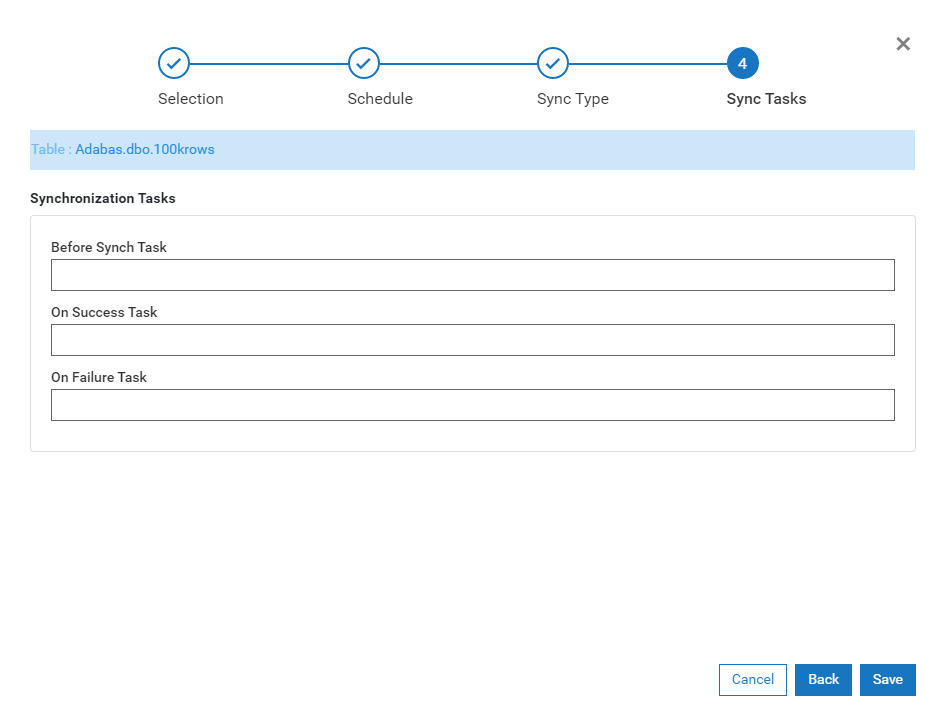Tasks can be associated with individual scheduled synchronizations. The tasks defined in this step run on an individual schedule, unlike Global Scheduled tasks which run for every scheduled synchronization. Synch Tasks can be any executable file or batch script that can be called within Windows.

Before Sync Task
To define a task to run before a synchronization is performed on the table, transformation or group specified in the schedule
definition, use the Before Synch Task text box to enter a valid executable filename or batch file. For example, to synchronize
a particular set of database files and then inform the administrator of that particular database of the scheduled synchronization,
a command line may resemble the following: (Note: This is a fictitious example)
c:\utils\epsendmail user@domain.com, databaseadmin-ops@domain.com, "DB Sync", "DB Sync Task started", 255.255.255.255
The command can be tested with the Global On-Demand Synchronization Before Sync Task and then cut-and-paste into the Before Synch Task text box once it is working properly.
On Success Task
To define a task to run upon the successful completion of a synchronization, use the On Success Task text box to enter a
valid executable filename or batch file. For example, to synchronize a particular set of database files and then inform the
administrator of that particular database that the scheduled synchronization successfully completely, a command line such
as the following could be used: (Note: This is a fictitious example)
c:\utils\epsendmail user@domain.com, databaseadmin-ops@domain.com, "DB Sync", "DB Sync Task Completed Successfully", 255.255.255.255
The command can be tested with the Global On-Demand Synchronization On Success Task and then cut-and-paste into the On Success Task text box once it is working properly.
On Failure Task
To define a task to run when a synchronization fails with an error, use the On Failure Task text box to enter a valid executable
filename or batch file. For example, to synchronize a particular set of database files and then inform the administrator
of that particular database that the scheduled synchronization failed to successfully complete, a command line such as the
following could be used: (Note: This is a fictitious example)
c:\utils\epsendmail user@domain.com, databaseadmin-ops@domain.com, "DB Sync", "DB Sync Task Failed", 255.255.255.255
The command can be tested with the Global On-Demand Synchronization On Failure Task and then cut-and-paste into the On Failure Task text box once it is working properly.
Click the Save button to save the Schedule and return to the Schedules Tab